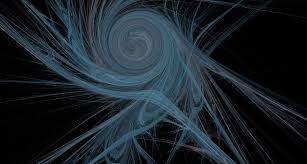
An important discrepancy in measurements of the universe’s acceleration has theorists wondering whether we’ve gotten something fundamentally wrong in our understanding of the history of the universe.

Each year, the Insight competition reminds us of how amazing our Universe is.

Until now, astrophysicists had only been able to locate about two-thirds of the ordinary matter. In the new research, an international team pinned down the missing third.

The theory, which was submitted for publication before Hawking's death earlier this year, is based on string theory and predicts the universe is finite and far simpler than many current theories about the big bang say.

Lengthy observations by the Hubble Space Telescope indicate the universe is expanding faster than predicted by standard models and that Einstein’s cosmological constant, thought by many to define dark energy, may not be so constant after all.

The simulation consists of 18 simulations covering various scales - each a cubic mock-up of space up to 1 billion light years wide - tracing the evolution of the Universe from just after the Big Bang into the future.

Even though we cannot physically access the 4D world, being aware of its existence will pave the way to future discoveries and a better understanding of our Universe.

We've never actually found any genuine proof for the existence of a multiverse - until now.

Physicists have a new scenario of the universe's expansion at the Big Bang that may explain why our universe has three large spatial dimensions.

Previously undetected matter was found in the form of gas filaments between galaxies, which is a major step toward explaining the structure of the cosmos.

Mathematical roadblocks with quantum mechanics indicate that the so-called simulation hypothesis is impossible.

Fast radio bursts were first detected in 2001. Since then, astronomers have found a couple of dozen FRBs, but they still don’t know what causes these rapid and powerful bursts of radio emission.

Dark Energy Survey scientists unveiled the most accurate measurement ever made of the present large-scale structure of dark matter in the Universe.

Using data from the Sloan Digitial Sky Survey, an Indian team of astronomers has discovered one of the largest cosmic structures to date - the Saraswati Supercluster.

When running Hawking and Hartles’ as well as Vilenkin’s, math, the new team didn’t get the teeny quantum fluctuations required to create today’s universe.